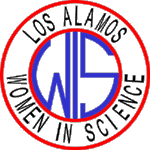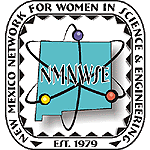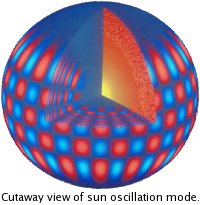 |
Northern Chapter of the New Mexico Network for Women in Science and Engineering LUNCHTIME TALK SERIES https://archive.nmnwse.org/lawis/lunchtalks Talk at 12:00, Tuesday, November 15, 2005 Bradbury Science Museum Auditorium 15th and Central, Los Alamos |

|
|
Dr. Joyce Ann Guzik, Thermonuclear Applications Group, X-2, LANL
Solar Element Abundances and Helioseismology |

(LA-UR-05-0650) For the past 35 years we have known that the Sun is vibrating like a giant bell, and its acoustic modes have been used to infer its interior structure to very high precision. Our computer models of the evolution of the Sun over the 4.54 billion years since its formation could predict these acoustic frequencies to within a few tenths of a percent. However, in 2004 the Sun's spectrum was reanalyzed using improved atmosphere models and atomic physics. We found surprisingly that the oxygen, carbon, and nitrogen abundances in the Sun are 30 to 40% lower than we had previously thought, and the abundances of other elements are lower by 10-15%. The percentage of elements heavier than hydrogen and helium in the Sun is now only 1.3% instead of the 2% previously believed. Now our computer models do not agree with the helioseismic data!
In this talk, I will give you a tour of the inside of the Sun (and explain how we know), and discuss the possibilities being considered to bring the models into agreement again with the acoustic mode data.
Biography - Joyce Guzik has been a member of the Thermonuclear Applications (Secondary Design) group X-2 since 1988. She received a Ph.D. in astrophysics from Iowa State University, and a B.A. in Physics, Math, and Russian Studies from Cornell College in 1982. She participated in the predictions for several underground tests before testing ended in 1992. She is currently a team leader and secondary physics point-of-contact for the W76 Life Extension Program. Since graduate school she has continued her astrophysics research, modeling the interiors and pulsation of the Sun and other variable stars, working with many collaborators and students. This summer she presented her work on the impact of the revised solar abundances at an international stellar evolution and pulsation conference in Rome, Italy, and published this work in the Astrophysical Journal.
 | Members and Nonmembers Welcome - Open to the Public |  |